All dogs like to chew. There are a lot of reasons for this, and sometimes it means that they’ll chew on something they shouldn’t! Dogs have been known to chew furniture, door frames, rugs, and much more besides – but why do they do it and, more importantly, how can you control it? If you’re worried about a mischievous pooch, you’ll want to keep reading; we’ll tell you everything you need to know about how to control their chewing!
W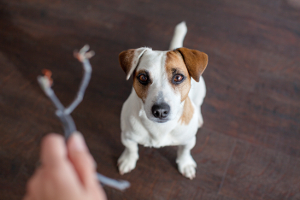 hy Do Dogs Chew?
hy Do Dogs Chew?
It’s perfectly normal for your dogs to spend a lot of time chewing, but when they start chewing on valuable things around your home (like furniture, for example), it becomes a problem. Before you look at how to stop your dog from chewing things around your house, it’s important to understand what the root of the problem is so you can control it. Dogs are naturally curious and playful animals and, as they don’t have hands, they need to use their mouths to interact with the world. Sometimes, though, chewing can be a symptom of an underlying health problem that will need to be resolved.
Exploratory Chewing in Puppies
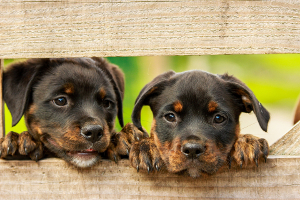 Dogs of all ages explore and play using their mouths, but it’s especially common in playful puppies! This means that young dogs are more likely to chew on furniture or other things around your house because they simply don’t know any better! You can prevent this kind of chewing from an early age simply by keeping a close eye on your puppy for the first few months of their life. As soon as you start to see them intently sniffing at a door frame, chair leg, or anything you don’t want them to chew, firmly tell them to leave it and reward them if they obey you. You can also use some of our Chew Repel spray to help discourage your dog from chewing valuables around the home – it has a natural bitter lemon taste which will make anything it’s sprayed on very unappealing!
Dogs of all ages explore and play using their mouths, but it’s especially common in playful puppies! This means that young dogs are more likely to chew on furniture or other things around your house because they simply don’t know any better! You can prevent this kind of chewing from an early age simply by keeping a close eye on your puppy for the first few months of their life. As soon as you start to see them intently sniffing at a door frame, chair leg, or anything you don’t want them to chew, firmly tell them to leave it and reward them if they obey you. You can also use some of our Chew Repel spray to help discourage your dog from chewing valuables around the home – it has a natural bitter lemon taste which will make anything it’s sprayed on very unappealing!
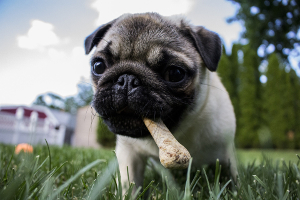 Teething
Teething
Puppies suffer from teething pain just like human babies do. This occurs when they get their first set of puppy teeth and when they get their adult teeth. Chewing helps to relieve some of the discomfort puppies and young dogs feel when they get new teeth coming through, so you can’t stop them from chewing everything in your house. What you can do, though, is give them lots of toys and chews to gnaw on and encourage them to chew on those instead! Combining this with a Chew Repel spray will give your dog a good idea what is and isn’t ok to chew around your home, which is a lesson they’ll take into adulthood.
 Jaw Exercise
Jaw Exercise
It isn’t just puppies that need to chew! Older dogs will instinctively chew to exercise their jaw muscles. Dogs use their jaws for eating, playing, exploring, and much more, so they need to keep them in good shape. Make sure your dog has plenty of chews and toys to keep themselves occupied and they won’t be tempted to chew on things they shouldn’t.
 Attention Seeking
Attention Seeking
If you use positive and negative reinforcement properly, you can teach your dog a lot of things. However, this can be both a good and bad thing! Dogs are very sociable animals, and if they feel ignored, they’ll do anything to get your attention. If your dog chews a pair of shoes and you react, your dog might learn that this is a way that they can get your attention. The best solution for this is to make sure you give your pooch lots of attention whenever you can, and keep a close eye on them to make sure they aren’t destructively chewing things they shouldn’t be.
Separation Anxiety
Some dogs hate to be left alone. Chewing can have a comforting effect for anxious dogs, so if they’re feeling stressed that you’re not around, it’s a natural reaction. They’re likely to chew things that carry your scent, like TV remotes, shoes, and items of clothing, and rip them into small pieces so they can surround themselves in a scent that makes them feel safe. There will be times when you have to leave your dog alone, so it’s best to try and train them to get used to it from an early age.
Practice leaving them in a room for a few minutes at a time at first, and give them some of their favourite toys to try and help them feel relaxed. Try and leave your dog in a different room every time – if you always lock them in a kitchen or a bathroom, they’ll start to associate that room with isolation, and will become skittish whenever they go in there. Once they’re used to this idea, you can start to leave the house for a few minutes at a time, gradually increasing the amount of time you’re gone each time. Remember this should be a gradual process – if your dog starts to show signs of anxiety, it’s ok to go back a few steps to try again.
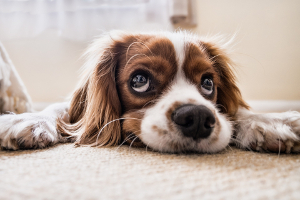 Boredom
Boredom
Even if your dog is fine with you leaving the house all day, they’ll still get bored and look for something to occupy them. This is especially common in working breeds such as spaniels, who have naturally high energy levels and need a lot of attention! Always make sure your dog has a lot of toys to keep them occupied if you’re leaving them alone for a while. You should also chew-proof your home with Chew Stop spray to encourage them to keep to their toys!
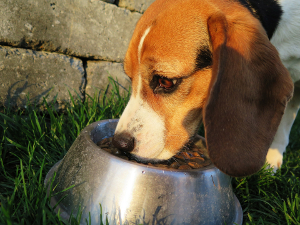 Poor Diet
Poor Diet
If your dog isn’t getting the nutrients they need from their food, they’ll start to try and eat things around the house. These things might include wood, plaster, fabric, and rubber. If your dog is eating stuff like this, there are some serious issues with your dog’s diet, so you should seek a vet’s advice. Make sure you’re feeding your dog a healthy, balanced diet and don’t fill them up with too many treats.


